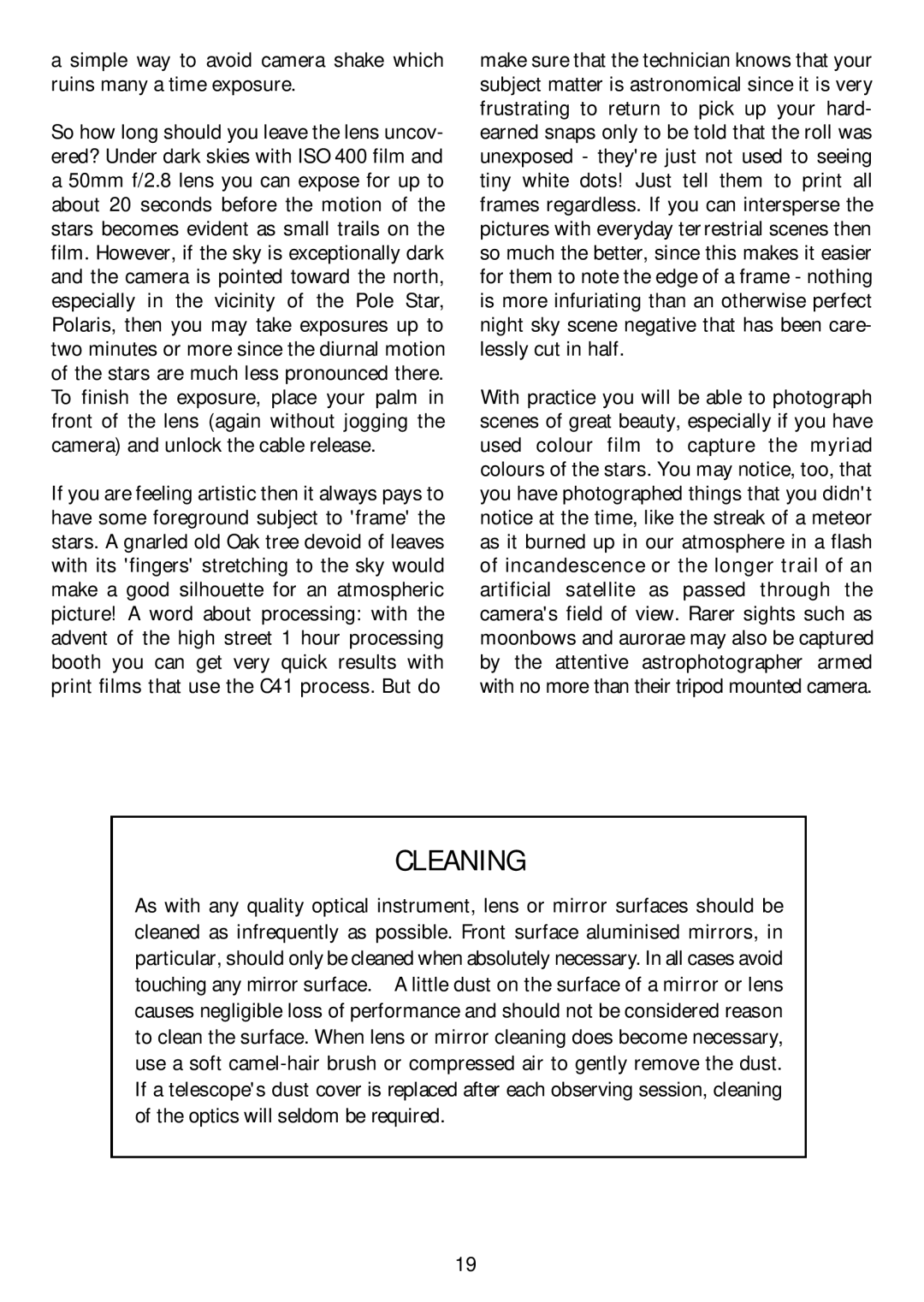
a simple way to avoid camera shake which ruins many a time exposure.
So how long should you leave the lens uncov- ered? Under dark skies with ISO 400 film and a 50mm f/2.8 lens you can expose for up to about 20 seconds before the motion of the stars becomes evident as small trails on the film. However, if the sky is exceptionally dark and the camera is pointed toward the north, especially in the vicinity of the Pole Star, Polaris, then you may take exposures up to two minutes or more since the diurnal motion of the stars are much less pronounced there. To finish the exposure, place your palm in front of the lens (again without jogging the camera) and unlock the cable release.
If you are feeling artistic then it always pays to have some foreground subject to 'frame' the stars. A gnarled old Oak tree devoid of leaves with its 'fingers' stretching to the sky would make a good silhouette for an atmospheric picture! A word about processing: with the advent of the high street 1 hour processing booth you can get very quick results with print films that use the C41 process. But do
make sure that the technician knows that your subject matter is astronomical since it is very frustrating to return to pick up your hard- earned snaps only to be told that the roll was unexposed - they're just not used to seeing tiny white dots! Just tell them to print all frames regardless. If you can intersperse the pictures with everyday terrestrial scenes then so much the better, since this makes it easier for them to note the edge of a frame - nothing is more infuriating than an otherwise perfect night sky scene negative that has been care- lessly cut in half.
With practice you will be able to photograph scenes of great beauty, especially if you have used colour film to capture the myriad colours of the stars. You may notice, too, that you have photographed things that you didn't notice at the time, like the streak of a meteor as it burned up in our atmosphere in a flash of incandescence or the longer trail of an artificial satellite as passed through the camera's field of view. Rarer sights such as moonbows and aurorae may also be captured by the attentive astrophotographer armed with no more than their tripod mounted camera.
CLEANING
As with any quality optical instrument, lens or mirror surfaces should be cleaned as infrequently as possible. Front surface aluminised mirrors, in particular, should only be cleaned when absolutely necessary. In all cases avoid touching any mirror surface. A little dust on the surface of a mirror or lens causes negligible loss of performance and should not be considered reason to clean the surface. When lens or mirror cleaning does become necessary, use a soft
19
